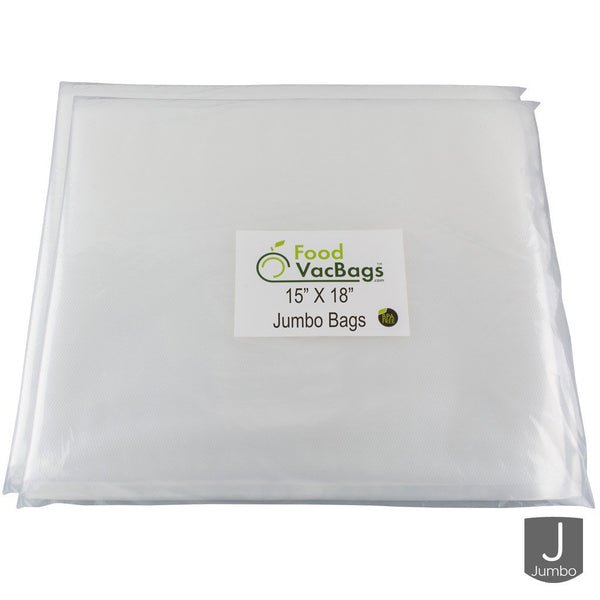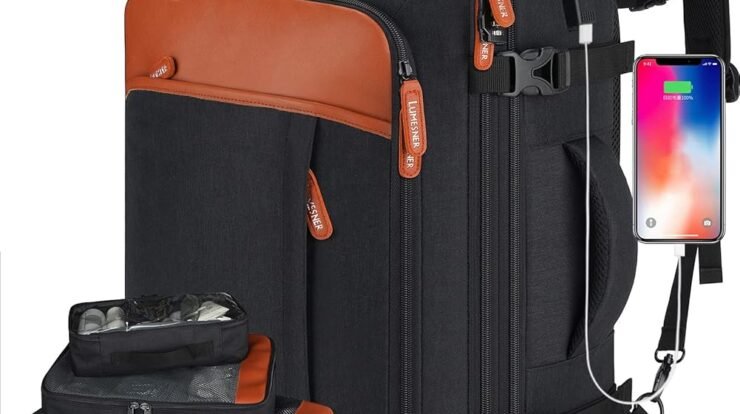If you’re serious about keeping your food fresh, saving space, and cutting down on waste, extra large vacuum seal bags are a game-changer. As someone who’s spent years experimenting with food storage solutions—both as a home cook and a meal prep enthusiast—I can confidently say these oversized bags are a must-have for anyone looking to store large quantities of food efficiently. Whether you’re a hunter preserving game, a bulk shopper stocking up on meat, or a sous vide aficionado cooking for a crowd, extra large vacuum seal bags offer unmatched versatility and durability. In this deep dive, I’ll walk you through why these bags are worth your investment, how to choose the best ones, and tips for getting the most out of them, all while sharing my expert perspective on what makes them stand out.

Why Extra Large Vacuum Seal Bags Are Essential for Food Storage
Vacuum sealing is one of the most effective ways to extend the shelf life of food. By removing air from the storage environment, vacuum seal bags slow down oxidation and prevent the growth of bacteria, mold, and yeast. This is especially critical for perishable items like meat, fish, and produce. But why go for extra large vacuum seal bags specifically? The answer lies in their capacity and flexibility.
Standard vacuum seal bags, typically sized for pints or quarts, are great for small portions. However, when you’re dealing with large cuts of meat, whole poultry, or bulk purchases, those smaller bags just don’t cut it. Extra large vacuum seal bags, often measuring 15” x 18” or larger, can handle everything from a full rack of ribs to a whole turkey. They’re also ideal for non-food items like camping gear or seasonal clothing, making them a versatile addition to your storage arsenal.
In my experience, these bags shine in three key scenarios:
1. Bulk Food Storage: If you shop at warehouse stores or harvest your own game, extra large bags let you portion and store large quantities without wasting space or bags.
2. Sous Vide Cooking: For sous vide enthusiasts, these bags accommodate bigger cuts of meat or multiple portions, ensuring an airtight seal during long, low-temperature cooking.
3. Long-Term Freezer Storage: The thick, durable material of high-quality extra large bags protects against freezer burn, keeping food fresh for months or even years.
What to Look for in Extra Large Vacuum Seal Bags
Not all vacuum seal bags are created equal. As someone who’s tested dozens of brands and sizes, I’ve learned that a few key features separate the best extra large vacuum seal bags from the rest. Here’s what to prioritize when shopping:
1. Material Quality and Thickness
The thickness of a vacuum seal bag is measured in mils (one-thousandth of an inch). Most extra large vacuum seal bags range from 3 to 4 mils on the smooth side (front) and 8 to 13 mils on the textured side (back). Thicker bags are generally more durable, offering better protection against punctures, especially when storing bone-in meats or sharp-edged items.
For long-term freezer storage, I recommend bags with at least 4 mils on the front and 10 mils on the back. Brands like OutOfAir and FoodVacBags consistently deliver this level of thickness, making them reliable choices for heavy-duty use. Thinner bags (under 3 mils) are fine for short-term storage or sous vide cooking but may not hold up for extended freezing.
Another critical factor is material safety. Always choose bags that are BPA-free and FDA-approved for food contact. This ensures your food stays safe, whether you’re freezing, microwaving, or boiling it in the bag.
2. Compatibility with Vacuum Sealers
Most extra large vacuum seal bags are universal, meaning they work with popular vacuum sealer brands like FoodSaver, Nesco, Weston, and VacMaster. However, some bags are designed specifically for certain machines, so double-check compatibility before buying. For example, FoodVacBags and OutOfAir bags are universal and pair well with most clamp-style sealers, while bags from brands like Crenova may only work with their proprietary machines.
If you’re using a vacuum sealer with a smaller seal bar (under 16 inches), you may need to get creative. Some users seal larger bags at a 45-degree angle to create a hexagonal shape, allowing them to fit on smaller machines. This trick has saved me countless times when working with oversized cuts of meat.
3. Textured vs. Smooth Design
High-quality vacuum seal bags typically have a smooth front and a textured back. The textured side, often featuring a honeycomb or embossed pattern, facilitates air removal during the sealing process, ensuring a tight, airtight seal. In my tests, bags with deep, well-defined textures (like those from Vacuum Sealers Unlimited’s ULTRA line) evacuate air more quickly and reliably than those with shallow patterns.
4. Additional Features
Some extra large vacuum seal bags come with thoughtful extras that make them easier to use:
Write-Ready Labels: Bags with large, smudge-free label areas (like OutOfAir’s) let you jot down contents and dates, keeping your freezer organized.
Tear Notches: These make opening bags a breeze, especially when you’re in a rush.
Side Markings: Measurement lines on the bag help you fill multiple bags to the same level, which is handy for meal prepping.
Reusability: Some bags, like FoodSaver’s reusable zipper bags, can be cleaned and reused for certain foods, saving money and reducing waste.
5. Price and Value
Extra large vacuum seal bags can be pricier than their smaller counterparts, but they often offer better value per square foot. For example, FoodVacBags’ 15” x 18” jumbo bags cost around $0.37 per bag, while OutOfAir’s 11” x 25’ rolls average $0.18 per square foot. Compare this to FoodSaver’s 11” x 16’ rolls, which can run $0.39 per square foot, and the savings add up over time.
To maximize value, I recommend buying rolls instead of pre-cut bags. Rolls allow you to customize bag size, reducing waste and giving you more flexibility. Plus, many rolls come with built-in cutters for easy sizing.
Read more: Exploring In-Ceiling White Noise Generators for Serenity and Focus
Top Picks for Extra Large Vakuum Seal Bags
After years of testing, here are my top recommendations for extra large vacuum seal bags, each excelling in specific use cases:
1. FoodVacBags 15” x 18” Jumbo Vacuum Seal Bags
Best for Large Cuts of Meat: These heavy-duty bags are 4 mils thick on the front and 10 mils on the back, making them ideal for storing large roasts, whole poultry, or game meat. Their honeycomb embossed channels ensure maximum air removal, and they’re compatible with most vacuum sealers with a 16” seal bar.
Pros: Durable, BPA-free, freezer- and boil-safe. Great for sous vide cooking.
Cons: Requires a wide seal bar, which may not work with smaller machines.
Price: Around $37.29 for 100 quart-sized bags ($0.37 per bag).
2. OutOfAir 11” x 25’ Vacuum Sealer Rolls
Best for Versatility: These rolls are 33% thicker than average (4 mils), with write-ready labels and tear notches for easy use. They’re perfect for custom-sizing bags to fit everything from bulk vegetables to camping gear.
Pros: Universal compatibility, smudge-free labels, excellent value at $0.18 per square foot.
Cons: Slightly pricier than some generic brands.
Price: Approximately $19.99 for two 25’ rolls.
3. Vacuum Sealers Unlimited ULTRA 15” x 50’ Vacuum Sealer Rolls
Best for Heavy-Duty Use: These 3.5-mil bags are designed for maximum puncture resistance, making them ideal for bone-in meats or long-term storage. Their deep textured mesh ensures rapid air evacuation.
Pros: USDA-approved, BPA-free, highly durable. Works with most clamp-style sealers.
Cons: Higher upfront cost compared to smaller rolls.
Price: Around $49.99 for a 50’ roll.
4. FoodSaver Expandable Rolls
Best for Bulky Items: These rolls are designed to accommodate oversized items like whole roasts or casseroles. Their multi-layer construction prevents freezer burn and ensures a reliable seal.
Pros: Safe for microwave, simmering, and sous vide up to 195°F. Easy to transport sealed meals.
Cons: More expensive per square foot ($0.39).
Price: Approximately $30.99 for three 11” x 16’ rolls.
How to Use Extra Large Vacuum Seal Bags Effectively

To get the most out of your extra large vacuum seal bags, follow these expert tips:
1. Prep Your Food Properly
Before sealing, pat wet foods like meat or fish dry with paper towels to prevent liquid from interfering with the seal. For juicy items, consider using a double seal or FoodSaver’s Liquid Block bags, which have a special strip to trap moisture.
2. Avoid Overfilling
It’s tempting to stuff as much as possible into an extra large bag, but overfilling can weaken the seal and make air removal less effective. Leave at least 2–3 inches of space at the top for the sealer to grip.
3. Double Seal for Extra Security
For long-term storage or sous vide cooking, double-sealing each end of the bag adds an extra layer of protection. This is especially helpful for bone-in meats, which can puncture thinner bags.
4. Store Bags Flat
To save space in your freezer, lay sealed bags flat until they freeze solid. Once frozen, you can stack them vertically like books to maximize storage.
5. Clean and Reuse When Possible
For non-greasy foods like dry goods or vegetables, you can wash and reuse bags to save money. Just cut off the sealed edge, clean thoroughly, and dry completely before resealing. Avoid reusing bags that held raw meat or fish to prevent cross-contamination.
6. Use for Non-Food Items
Extra large vacuum seal bags aren’t just for food. I’ve used them to store camping gear, winter clothing, and even important documents to protect against moisture and dust. They’re also great for compressing items to save space in luggage or closets.
Read more: Finding the Best Continuous White Noise Machine for Restful Sleep
Common Mistakes to Avoid
Even seasoned vacuum sealers make mistakes. Here are some pitfalls to watch out for:
Using Thin Bags for Long-Term Storage: Thin bags (under 3 mils) are prone to punctures and freezer burn. Invest in thicker bags for extended freezing.
Ignoring Compatibility: Always check that your bags work with your sealer. Non-universal bags can lead to weak seals or machine damage.
Sealing Wet Bags: Moisture in the sealing area can prevent a proper seal. Wipe the bag’s edge dry before sealing.
Overlooking Maintenance: Clean your vacuum sealer regularly to prevent food residue from affecting performance. A dirty seal bar can weaken seals over time.
The Bigger Picture: Why Vacuum Sealing Matters
Beyond convenience, extra large vacuum seal bags contribute to a more sustainable kitchen. By extending the shelf life of food, they help reduce waste, saving you money and reducing your environmental footprint. In my household, vacuum sealing has cut our food waste by at least 30%, allowing us to make the most of bulk purchases and seasonal harvests.
These bags also empower you to take control of your meal prep. Whether you’re batch-cooking for the week or preserving a hunting haul, extra large vacuum seal bags make it easy to portion, store, and enjoy food at its freshest. Plus, their versatility for sous vide cooking opens up a world of culinary possibilities, from perfectly cooked steaks to flavorful vegetables.
Read more: Best Portable Car Seats for 18-Month-Olds – Expert Picks for Safety and Convenience
Final Thoughts
Extra large vacuum seal bags are more than just a storage solution—they’re a tool for smarter, more efficient living. With their ability to handle large quantities, protect against freezer burn, and support sous vide cooking, they’re an essential part of any serious home cook’s toolkit. By choosing high-quality bags like those from FoodVacBags, OutOfAir, or Vacuum Sealers Unlimited, you’re investing in durability, safety, and value.
Whether you’re sealing a whole turkey, organizing your freezer, or packing for a camping trip, these bags deliver unmatched performance. Take the time to pick the right bags for your needs, follow best practices, and avoid common mistakes, and you’ll wonder how you ever lived without them. So, grab your vacuum sealer, stock up on extra large bags, and start preserving your food like a pro.






